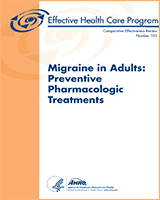 |
test site |
|
|||||
| Executive Editor.....Anne-Merete Robbs CEO..............Stan Swartz | ||||||||||||||||||||||

| ||||||||||||||||||||||

| ||||||||||||||||||||||
| ||||||||||||||||||||||
| "Dr. Vollmer is close to a MS cure..but..he needs you to help by joining a trial!" | ||||||||||||||||||||||
| Stan Swartz, CEO, The MD Health Channel "Plus...You'll receive all medication and study based procedures at NO CHARGE" . |
||||||||||||||||||||||
|
||||||||||||||||||||||
|
||||||||||||||||||||||
|
||||||||||||||||||||||
| "MY EDUCATIONAL VIDEO ON MS" | ||||||||||||||||||||||
| "THE VOLUNTARY SUSPENSION OF TYSABRI BY BIOGEN IDEC AND ELAN" | ||||||||||||||||||||||
 |
||||||||||||||||||||||
| Timothy L. Vollmer M.D. Director, Barrow NeuroImmunology Program Barrow Neurological Institute St. Joseph's Hospital and Medical Center |
||||||||||||||||||||||
|
||||||||||||||||||||||
|
||||||||||||||||||||||
|
||||||||||||||||||||||
| Previious Posts | ||||||||||||||||||||||
|
||||||||||||||||||||||
| MS NEWS ARCHIVES: by week | ||||||||||||||||||||||
| December 2005 | ||||||||||||||||||||||
| January 2006 | ||||||||||||||||||||||
| May 2006 | ||||||||||||||||||||||
| June 2006 | ||||||||||||||||||||||
| October 2006 | ||||||||||||||||||||||
| October 2013 | ||||||||||||||||||||||
| November 2013 | ||||||||||||||||||||||
| December 2013 | ||||||||||||||||||||||
| April 2014 | ||||||||||||||||||||||
Saturday
FREE.... MIGRAINES
Structured Abstract
Objectives:
To assess comparative effectiveness and safety of preventive pharmacologic treatments for community-dwelling adults with episodic or chronic migraine.Data sources:
We searched major electronic bibliographic databases and trial registries up to May 20, 2012.Review methods:
We performed a systematic review of published, English-language original studies of pharmacologic treatments for prevention of episodic or chronic migraine. Studies that compared drugs with inactive controls, nonpharmacologic interventions, or other drugs were eligible. Outcomes evaluated included rates of complete migraine cessation, ≥50 percent reduction in monthly migraine frequency, reduction in migraine-related disability, and improvement in quality of life. We calculated absolute risk differences, pooled them with random-effects models and with Bayesian network meta-analysis, and calculated numbers of outcome events attributable to treatments per 1,000 participants treated.Results:
Of 5,244 retrieved references, 245 publications of randomized controlled clinical trials (RCTs) and 76 publications of nonrandomized therapeutic studies met eligibility criteria. Most enrollees were middle-aged Caucasian women, with an average of five monthly migraine attacks. Few trials reported the proportion of obese subjects, but many subjects were overweight. More than half of the RCTs defined migraine according to the International Headache Society criteria. Studies excluded adults with severe medical or psychiatric illnesses or contraindications to examined drugs. Strength of evidence was mostly low due to risk of bias and imprecision in individual RCTs and pooled estimates.For chronic migraine, botulinum toxin formulations were examined in 20 RCTs of 4,237 adults. Onabotulinumtoxin A was more effective than placebo in reducing monthly chronic migraine attacks by ≥50 percent (low-strength evidence from 3 RCTs of 459 adults) with inconsistent improvement in quality of life. Pooled analyses demonstrated that per 1,000 treated adults, 170 (95% confidence interval [CI], 82 to 258) would experience ≥50 percent reduction in migraine frequency, 155 (95% CI, 90 to 220) would experience adverse effects, and 26 (95% CI, 10 to 43) would discontinue treatments due to bothersome adverse effects. Topiramate reduced disability in patients with chronic migraine but failed to decrease monthly migraine frequency by ≥50 percent (low-strength evidence from one RCT of 328 adults). Individual RCTs examined the comparative effectiveness of onabotulinumtoxin A with topiramate or divalproex and found no differences in chronic migraine prevention. Propranolol combined with topiramate treatment demonstrated no benefits in nonresponders to topiramate monotherapy (low-strength evidence from one RCT of 191 adults).
For episodic migraine, RCTs examined 59 drugs from 14 drug classes. All approved drugs (topiramate, divalproex, timolol, and propranolol), some off-label beta blockers, ACE inhibitors, and the angiotensin II receptor antagonist candesartan were better than placebo in reducing episodic monthly migraine frequency by ≥50 percent. Drugs would result in clinical improvement in 200 to 400 patients per 1,000 treated. Adverse effects leading to treatment discontinuation were examined in 68 RCTs. Topiramate, off-label antiepileptics, and antidepressants resulted in bothersome adverse effects leading to treatment discontinuation more often than placebo.
Limited direct evidence of comparative effectiveness from head-to-head RCTs demonstrated no consistent significant differences in outcomes with examined drugs in patients with episodic migraine. Exploratory indirect adjusted frequentist analysis offered low-strength evidence that the angiotensin II receptor blocker candesartan was more effective than approved drugs including topiramate, propranolol, timolol, and divalproex. Exploratory network Bayesian meta-analysis offered low-strength evidence that angiotensin inhibiting drugs (captopril, lisinopril, candesartan) were the most effective and tolerable for episodic migraine prevention in adults who have no contraindications to examined drugs.
Individual RCTs of drug-management interventions for episodic migraine offered low-strength evidence that compared with usual care, multidisciplinary team care improved quality of life and reduced migraine-related disability; a headache management program resulted in complete cessation of migraine; a minimal-contact cognitive-behavioral program improved patient satisfaction with treatments; headache school decreased overuse of drugs for acute headache attacks and reduced migraine disability; pharmaceutical care improved self-efficacy; and an intensive pharmaceutical care campaign had no statistically significant impact on use of acute drugs.









